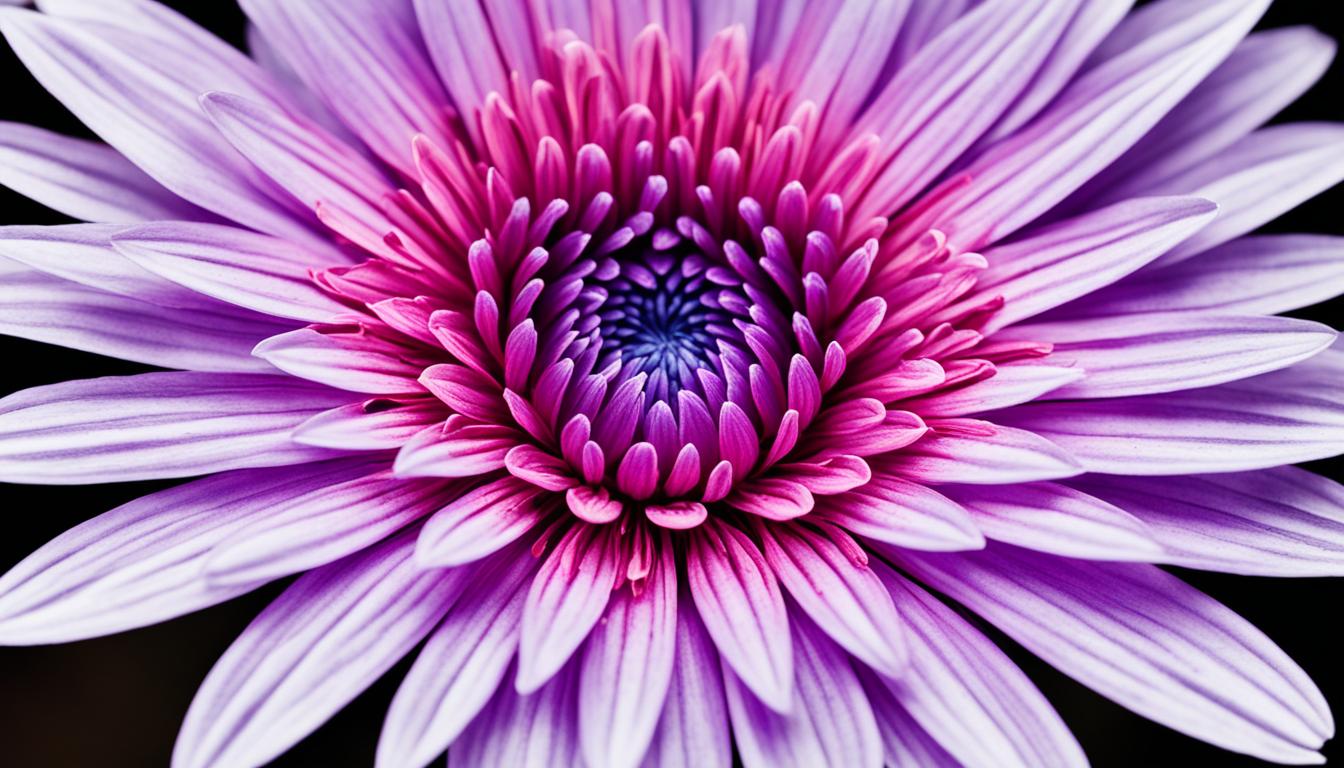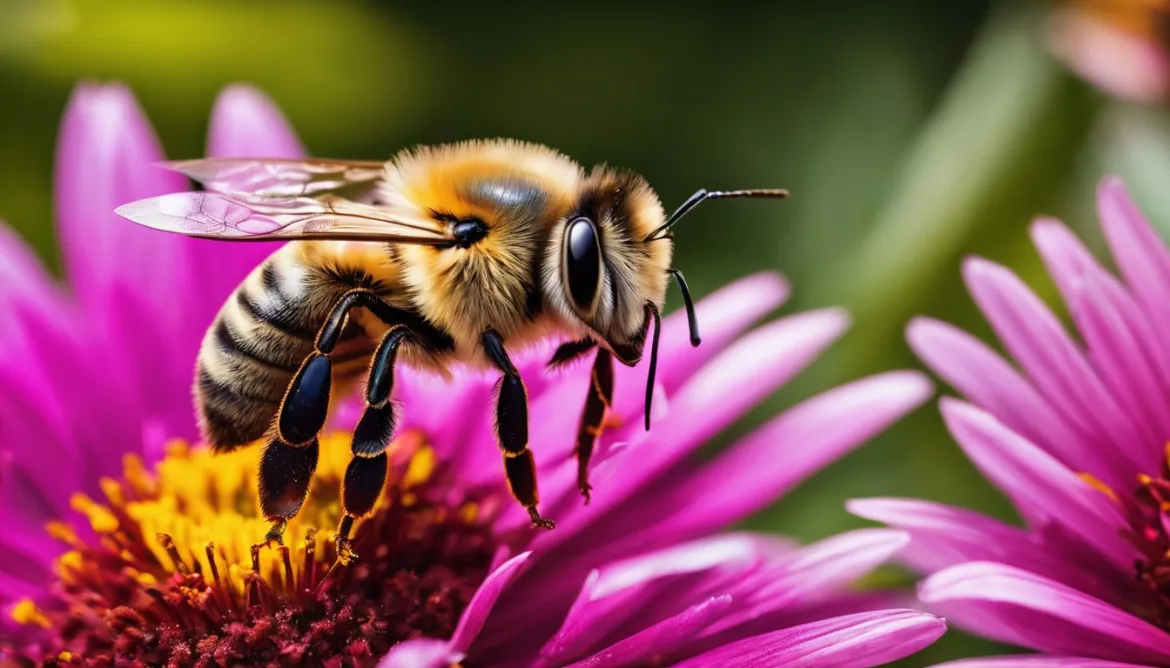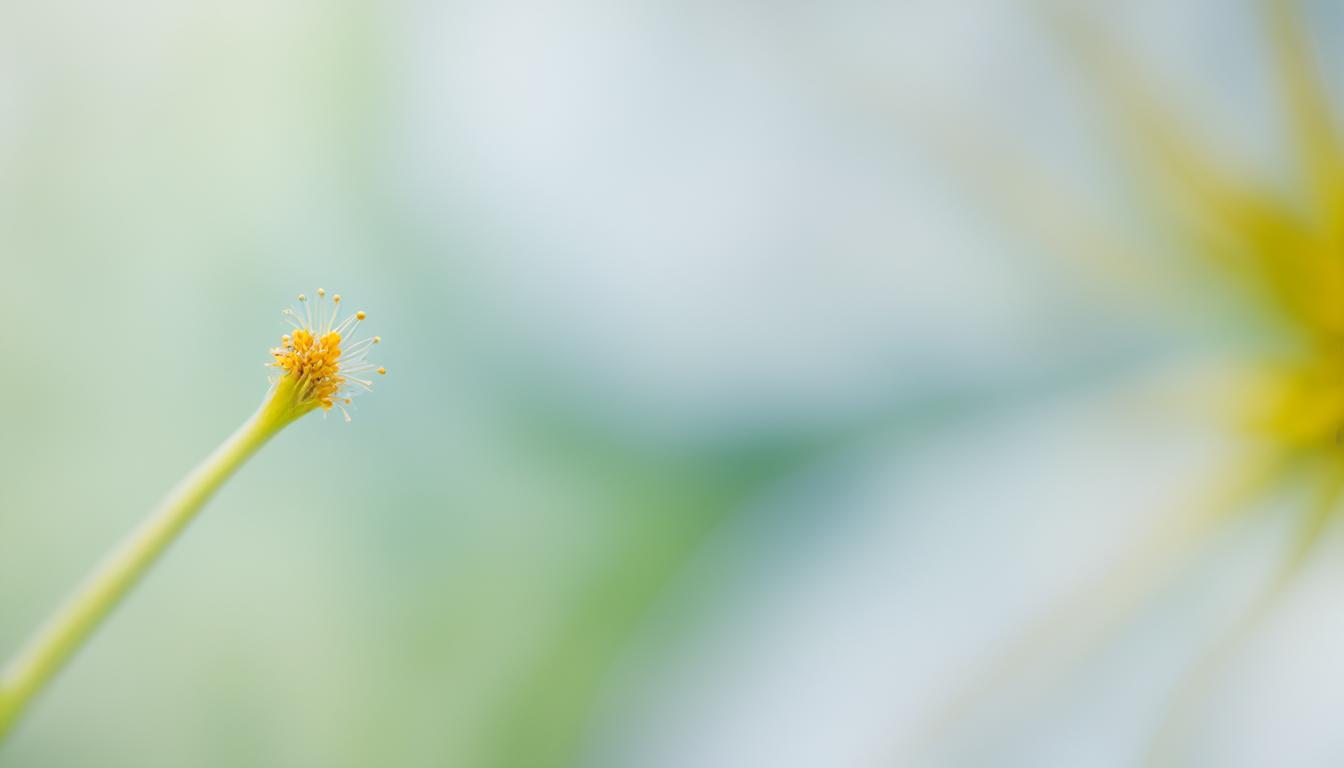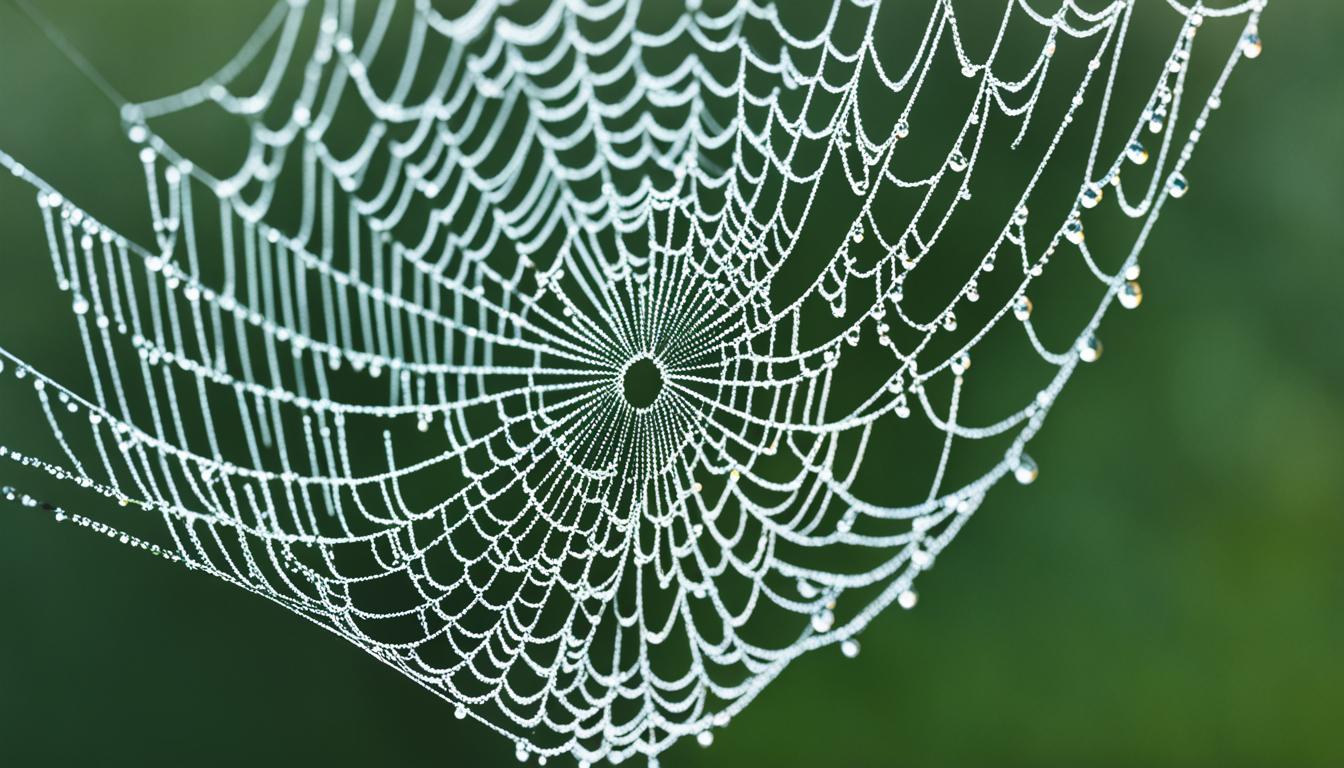Welcome to our guide on focus stacking techniques in macro photography. If you’re looking to capture stunning close-up images with greater depth of field, then focus stacking is the technique for you. In this article, we’ll explore the importance of depth of field in macro photography, the factors that affect it, and how focus stacking can help you achieve sharper and more detailed images. We’ll also discuss different methods for focus stacking, tips for success, post-processing techniques, as well as the advantages and limitations of this powerful technique. So, let’s dive in and discover how to maximize your macro depth of field with focus stacking!
Key Takeaways:
- Focus stacking is a technique used in macro photography to achieve a greater depth of field.
- It involves taking multiple photos at slightly different focusing distances and merging them to create an overall sharp image.
- Depth of field is crucial in macro photography, and focus stacking helps overcome the limitations of shallow depth of field at high magnifications.
- Factors such as lens magnification, aperture, distance, and sensor type affect depth of field in macro photography.
- There are various methods for focus stacking, including manual focusing, manual focusing rail, automated focusing rail, in-camera focus stacking, Helicon Tube, and handheld stacking.
The Importance of Depth of Field in Macro Photography
In macro photography, achieving a sufficient depth of field is crucial to ensure that the subject is in focus from front to back. However, at high magnifications, the depth of field becomes extremely narrow, making it challenging to capture sharp images of the entire subject.
This is where focus stacking comes in. By combining multiple images with different focus points, we can extend the depth of field and create images with greater sharpness and detail. Focus stacking is a powerful technique that overcomes the limitations of shallow depth of field in high magnification photography.
With focus stacking, we take a series of images where each shot is focused on a different part of the subject. These images are then merged together in post-processing software to create a composite image with a broader depth of field.
Why is depth of field important in macro photography?
Depth of field refers to the range of distances in an image that appear acceptably sharp. In macro photography, where the subjects are often small and intricate, having a sufficient depth of field is crucial to ensure that all the details are in focus.
“Macro photography allows us to explore the often unseen world of small subjects, revealing the intricate details and beauty that lie within. To truly capture the essence of these subjects, we need to ensure that they are sharp and in focus from front to back.”
Without adequate depth of field, the image may have parts that are blurry or out of focus, resulting in a loss of detail and impact. This is especially important when photographing subjects with texture, patterns, or delicate features that we want to showcase.
How does focus stacking help in macro photography?
Focus stacking allows us to overcome the limitations of shallow depth of field at high magnifications. By blending together multiple images with different focus points, we can create a final image with a greater depth of field, resulting in sharpness and detail throughout the subject.
With focus stacking, we can ensure that even the smallest details are captured with clarity, resulting in stunning macro photographs that reveal the intricacies of the subject. Whether it is a close-up shot of a flower, an insect, or a product, focus stacking allows us to showcase the subject’s beauty and story in full, exquisite detail.
Don’t miss our next section, where we discuss the factors that affect the depth of field in macro photography and how understanding them can help us achieve optimal results.
Factors Affecting Depth of Field in Macro Photography
When it comes to macro photography, achieving the desired depth of field is crucial in capturing sharp and detailed images. However, the depth of field in macro photography is influenced by several factors that photographers need to consider. These factors include:
- Magnification: The level of magnification achieved with the lens used can significantly affect the depth of field. Higher magnifications tend to result in shallower depths of field, making it more challenging to capture the entire subject in focus.
- Aperture: The chosen aperture setting plays a crucial role in determining the depth of field. Wider apertures (smaller f-numbers) result in shallower depths of field, while smaller apertures (larger f-numbers) increase the depth of field.
- Distance: The distance between the camera’s sensor or lens and the subject also affects the depth of field. Closer distances tend to produce shallower depths of field, while greater distances can help increase the depth of field.
- Sensor Type: The type and size of the camera sensor can influence the depth of field as well. Larger sensors, such as those found in full-frame cameras, generally offer greater control over depth of field compared to smaller sensors.
Understanding how these factors interplay is essential in determining the optimal settings for focus stacking, a technique that can help overcome the limitations of shallow depth of field in macro photography. By strategically combining multiple images with different focus points, photographers can achieve a greater overall depth of field and capture stunningly detailed close-up shots.

| Factors Influencing Depth of Field in Macro Photography | Effects on Depth of Field |
|---|---|
| Magnification | Higher magnifications result in shallower depths of field. |
| Aperture | Wider apertures result in shallower depths of field, while smaller apertures increase the depth of field. |
| Distance | Closer distances between the camera and subject tend to produce shallower depths of field. |
| Sensor Type | Larger sensors offer greater control over depth of field compared to smaller sensors. |
Focus Stacking Technique
In macro photography, where the depth of field is typically very shallow, focus stacking is a valuable technique that enables us to achieve greater depth of field and capture sharpness and detail throughout the entire subject.
Focus stacking involves taking multiple photos of the same subject at slightly different focusing distances. These images are then merged using post-processing software to create a composite image with extended depth of field.
By blending the focused areas of each image, we can overcome the limitations of shallow depth of field and create a final image that is sharp and detailed from front to back.
Let’s imagine photographing a small flower from up close. As we increase our magnification and get closer to the subject, the depth of field becomes extremely narrow. This means that only a small portion of the flower will be in focus while the rest remains blurry. However, by employing the focus stacking technique, we can capture multiple images with different focus points, ensuring that every part of the flower is in sharp focus.
Focus stacking is particularly useful in close-up and macro photography, where capturing intricate details is essential. It allows us to showcase the beauty and complexity of small subjects, revealing details that would otherwise be missed due to the limitations of depth of field.
After capturing the stack of images, the next step is to use post-processing software to align and merge them. This process involves aligning each image to ensure that the focused areas match perfectly, creating a seamless final image with extended depth of field.
The image below demonstrates the power of focus stacking in macro photography:
Tips for Successful Focus Stacking
To achieve optimal results with focus stacking, here are some useful tips:
- Use a sturdy tripod to minimize camera movement and ensure consistent framing between shots.
- Utilize a remote control or self-timer to trigger the shutter without touching the camera, reducing the risk of vibration.
- Experiment with different focus distances and step sizes to determine the ideal settings for your subject.
- Consider the composition of your image and how focus stacking will impact the overall look. Plan your shots accordingly.
- Pay attention to lighting conditions to ensure that all parts of the subject are well-exposed in the final composite image.
By following these tips and mastering the focus stacking technique, we can enhance our macro photography and capture stunning images with impressive depth of field.
Different Methods for Focus Stacking
When it comes to focus stacking, there are several methods you can employ to achieve stunning results. Let’s explore each of these methods in detail:
Manual Focusing
If you prefer a hands-on approach, manual focusing is a great option. By manually shifting the focus between shots, you have complete control over the focus distance. Utilizing features like live view or focus peaking can ensure utmost accuracy.
Manual Focusing Rail
To further enhance precision and avoid focus breathing, a manual focusing rail can be an excellent tool. It allows you to precisely adjust the focus distance, ensuring each shot is perfectly aligned. With this method, you can achieve consistent results and maintain optimal sharpness throughout your stacked image.
Automated Focusing Rail
If you’re looking for even greater control and automation, an automated focusing rail is an ideal choice. These rails offer advanced features such as programmable movements and motorized adjustments. This method streamlines the focus stacking process, allowing you to focus on capturing the perfect shot.
In-Camera Focus Stacking
For photographers using compatible cameras, the in-camera focus stacking feature provides a convenient and efficient solution. This method eliminates the need for post-processing software by automatically merging focused areas from multiple shots into one final image. It simplifies the workflow and saves time, making it an attractive option for many photographers.
Helicon Tube
The Helicon Tube is a specialized extension tube designed specifically for automated focus stacking. It integrates with your existing lens and camera setup, allowing for seamless focus stacking. The Helicon Tube automates the focus adjustment process, enabling you to achieve precise and consistent results with ease.
Handheld Stacking
While traditional focus stacking methods often involve the use of tripods and precise adjustments, handheld stacking offers a level of flexibility and spontaneity. This technique is particularly useful when photographing moving subjects or situations where setting up a tripod is not feasible. Although handheld stacking requires a steady hand and careful execution, it can yield impressive results.

Now that you’re familiar with the different methods for focus stacking, you can choose the one that best suits your shooting style and preferences. Whether you opt for manual precision, automation, or handheld flexibility, focus stacking opens up a world of creative possibilities in macro photography.
Tips for Successful Focus Stacking
To achieve successful focus stacking in macro photography, we have compiled a few key tips that can help you maximize your depth of field, sharpness, and composition:
1. Pay Attention to Composition
When setting up your shot, consider the composition and placement of the subject. Ensure that the subject is positioned in a way that allows for an effective stack. Take into account the elements around the subject and how they contribute to the overall composition of your image.
2. Use a Tripod to Maintain Stability
Using a tripod is essential for focus stacking to maintain stability and avoid camera shake. It ensures that each image in the stack is captured with precision, resulting in a seamless blending process during post-processing.
3. Consider Using a Remote Control or Self-Timer
To further minimize vibrations, consider using a remote control or self-timer when capturing the images for focus stacking. This prevents any disturbances that may arise from manually pressing the shutter button.
4. Experiment with Different Focus Distances and Step Sizes
Explore various focus distances and step sizes to create the desired depth of field in your final stacked image. This experimentation allows you to find the optimal settings that produce the sharpest and most detailed result.
5. Be Mindful of Lighting Conditions
Lighting plays a crucial role in capturing macro images. Ensure that you have sufficient and even lighting throughout your focus stack to maintain consistent exposure across all images. Pay attention to shadows, highlights, and any potential overexposure or underexposure.
Implementing these tips will help you achieve successful focus stacking in your macro photography. By meticulously composing your shots, utilizing a tripod and remote control, experimenting with focus distances, and considering lighting conditions, you can elevate your images with greater depth of field, sharpness, and overall visual impact.
| Tips for Successful Focus Stacking |
|---|
| Pay Attention to Composition |
| Use a Tripod to Maintain Stability |
| Consider Using a Remote Control or Self-Timer |
| Experiment with Different Focus Distances and Step Sizes |
| Be Mindful of Lighting Conditions |
Post-Processing for Focus Stacking
After capturing the images for focus stacking, the next step is post-processing. This crucial stage involves aligning the images to ensure proper registration, as slight shifts may occur during the focusing process. To accomplish this, we need powerful software that can handle image alignment seamlessly. We have a range of options, including renowned software like Photoshop, Helicon Focus, and Zerene, each offering unique features and capabilities.
Once the images are aligned, the next step is to blend them together to create a composite image with extended depth of field. This process requires specialized image blending techniques to seamlessly merge the focused areas of each image. The software we choose plays a vital role in achieving this. From the extensive capabilities of Photoshop to the focused functionality of Helicon Focus and Zerene, these software options provide us with the tools we need to achieve remarkable focus stacking results.
Whether you prefer the versatility and familiarity of Photoshop or the specialized features of Helicon Focus and Zerene, the choice of software ultimately depends on your specific needs and preferences. Take the time to explore their features and test them out to determine which one works best for your focus stacking workflow.
Next, let’s explore the post-processing techniques and steps required to achieve successful focus stacking by blending the aligned images into a final composite image with extended depth of field.
Advantages and Limitations of Focus Stacking
Focus stacking in macro photography offers several advantages, allowing us to overcome the limitations of shallow depth of field and capture stunning images with greater sharpness and detail. However, it is important to be aware of its limitations and consider the trade-offs involved.
Advantages of Focus Stacking
One of the primary advantages of focus stacking is the ability to achieve a greater depth of field. In macro photography, capturing an entire subject in sharp focus can be challenging due to the shallow depth of field at high magnifications. Focus stacking allows us to take multiple images with different focus points and blend them together to create a composite image with extended depth of field. This technique ensures that every detail of the subject is captured in sharp focus.
Another advantage of focus stacking is the improvement in image quality. By combining multiple images, any imperfections or noise present in individual frames can be reduced, resulting in a cleaner and more visually appealing final image. Additionally, focus stacking helps to enhance detail and texture, especially in small subjects where capturing fine details is crucial.
Furthermore, focus stacking provides us with creative control over the depth of field. We can choose the desired depth of field according to the subject and the effect we want to achieve. This flexibility allows us to create unique images with a balance between sharpness and background blur, effectively separating the subject from the surroundings.
Limitations of Focus Stacking
While focus stacking offers numerous benefits, it also has some limitations that photographers need to consider:
- Time-consuming process: Focus stacking can be time-consuming, especially when capturing a large number of images or dealing with complex subjects. Each frame needs to be carefully adjusted for focus, and the alignment and blending process during post-processing can take considerable time.
- Subject movement: Focus stacking is not suitable for subjects in motion. Since focus stacking requires capturing multiple images at different focus distances, any movement in the subject during the process can result in misaligned frames and an unsuccessful blend.
- Challenging lighting conditions: Focus stacking may present challenges in situations where the lighting conditions are constantly changing or when shooting in low light. Ensuring consistent lighting across multiple frames is essential for a successful focus stack.
Despite these limitations, when used effectively and in the right situations, focus stacking can significantly enhance the final result of macro photography, enabling us to capture intricate and detailed images that are visually striking.
| Advantages of Focus Stacking | Limitations of Focus Stacking |
|---|---|
| Greater depth of field | Time-consuming process |
| Improved image quality | Subject movement |
| Enhanced detail and texture | Challenging lighting conditions |
| Creative control over depth of field |
Conclusion
Focus stacking is a game-changer for macro photographers seeking to achieve greater depth of field in their close-up images. By combining multiple photos with different focus points, we can overcome the limitations of shallow depth of field and capture stunningly detailed and sharp images of our subjects.
With focus stacking, we have the ability to extend the depth of field and ensure that every part of our subject is in sharp focus, even at high magnifications. This technique opens up a whole new world of creative possibilities in macro photography, allowing us to capture intricate details and showcase the beauty of the smallest subjects.
Although focus stacking does require some additional time and effort in both capturing and post-processing, the end results are well worth it. The final images we obtain are visually striking and captivating, with a level of detail and sharpness that cannot be achieved through traditional methods.
So, if you’re looking to take your macro photography to the next level and unlock the full potential of depth of field, give focus stacking a try. Explore the possibilities it offers and watch as your close-up images come to life with exceptional clarity and detail.
FAQ
What is focus stacking?
Focus stacking is a technique used in macro photography to achieve a greater depth of field. It involves taking multiple photos at slightly different focusing distances and then combining them in post-processing to create one overall sharp image.
Why is depth of field important in macro photography?
In macro photography, achieving a sufficient depth of field is crucial to ensure that the subject is in focus from front to back. However, at high magnifications, the depth of field becomes extremely narrow, making it challenging to capture sharp images of the entire subject.
What factors influence the depth of field in macro photography?
The depth of field in macro photography is influenced by the magnification of the lens used, the aperture chosen, the distance between the sensor/lens and the subject, and the type of sensor.
How does focus stacking work?
Focus stacking involves taking multiple photos of the same subject at slightly different focusing distances and then merging them into one final image. The images are aligned and combined in post-processing software to create a composite image with a greater depth of field.
What are the different methods for focus stacking?
Different methods for focus stacking include manual focusing, manual focusing rail, automated focusing rail, in-camera focus stacking, Helicon Tube, and handheld stacking.
What are some tips for successful focus stacking?
Some tips for successful focus stacking include paying attention to composition, using a tripod to avoid camera shake, experimenting with different focus distances and step sizes, and being mindful of lighting conditions.
How do I post-process focus stacked images?
After capturing the images for focus stacking, the next step is post-processing. Software such as Photoshop, Helicon Focus, or Zerene can be used to blend the aligned images and create a composite with extended depth of field.
What are the advantages and limitations of focus stacking?
The advantages of focus stacking include achieving a greater depth of field and capturing sharpness and detail throughout the subject. However, focus stacking can be time-consuming, especially when capturing a large number of images, and it may not be suitable for subjects in motion or challenging lighting conditions.
What are the benefits of using focus stacking in macro photography?
Focus stacking allows macro photographers to overcome the limitations of shallow depth of field at high magnifications and capture stunningly detailed close-up images.
How Can Advanced Composition Techniques Enhance Macro Photography with Focus Stacking?
Advanced composition techniques beyond thirds can greatly enhance the impact of macro photography with focus stacking. By utilizing leading lines, framing, and negative space, photographers can create visually stunning and dynamic images. These techniques help draw attention to the main subject and create a sense of depth and dimension.




